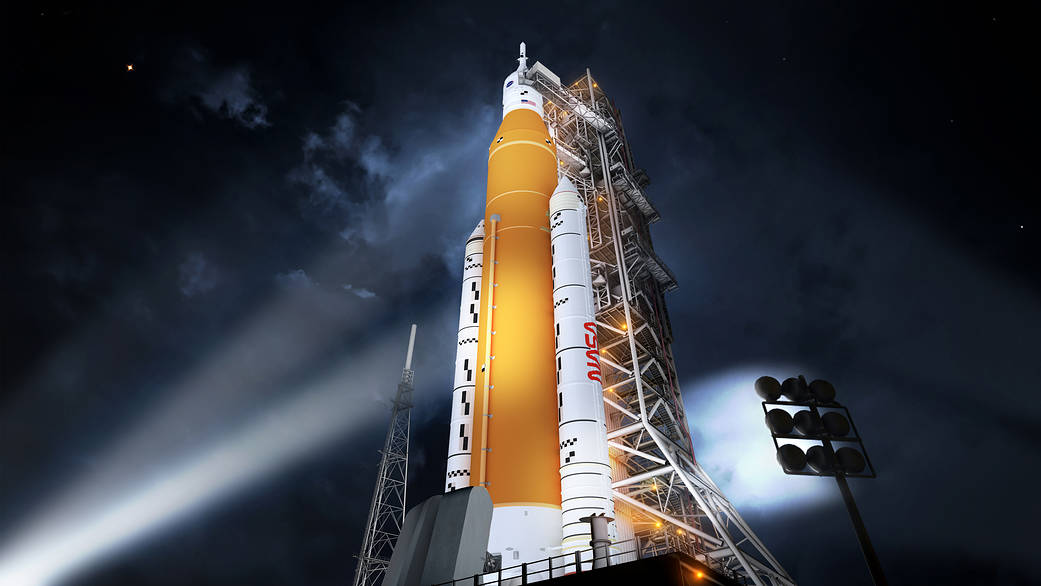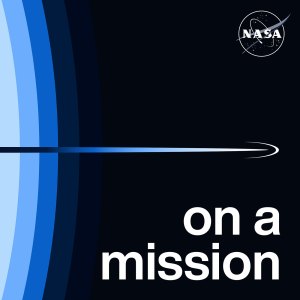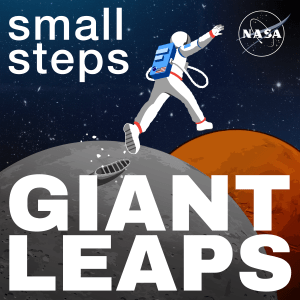Industry Partners
NASA is continuing America’s journey of discovery by developing space technologies and building the next-generation rocket, spacecraft, landers, and ground systems operations to facilitate missions into deep space—beyond the Moon and eventually to Mars.
NASA prime contractors Aerojet Rocketdyne, Axiom Space, Bechtel, Blue Origin, Boeing, Collins Aerospace, Jacobs, Lockheed Martin, Maxar Space Systems, Northrop Grumman, and SpaceX currently have more than 3,800 suppliers across 49 states contributing to the lunar spaceport at NASA’s Kennedy Space Center, Orion, the SLS (Space Launch System) rocket, Gateway space station, human landing systems, and spacesuits and mobility systems tailored for the Moon. With NASA investments, additional U.S. companies, including small businesses, are advancing the operations and systems needed for a sustained presence on the Moon by 2028.
- At NASA Kennedy in Florida, existing infrastructure and facilities are being modernized to support a lunar spaceport capable of launching spacecraft built and designed by both NASA and private industry, as well as orchestrating recovery operations after each mission. Prime contractors supporting Exploration Ground Systems, or EGS, include Jacobs (based out of Tullahoma, Tennessee) and Bechtel (based out of Reston, Virginia). Jacobs is responsible for development and operations of flight vehicle components — including integration, processing, testing, launch, and recovery. The Jacobs team has helped NASA to upgrade facilities and ground equipment at Kennedy to prepare for the launch of SLS and Orion. Bechtel, meanwhile, is charged with designing, building, testing, and commissioning the Mobile Launcher 2, or ML2, a new ground structure that will be used to support the SLS Block 1B rocket planned for Artemis IV and beyond.
- The SLS (Space Launch System) is the only rocket capable of sending the Orion spacecraft, four astronauts, and large cargo directly to the Moon on a single launch. It is designed to be both powerful and flexible for crew, cargo, or science missions. NASA’s prime contractors for SLS include Aerojet Rocketdyne, an L3Harris Technologies Company, Boeing, and Northrop Grumman.
- Orion is the first spacecraft in history capable of carrying humans on long-duration missions in deep space. Lockheed Martin is the lead contractor for the design, development testing, and production of the Orion spacecraft for NASA’s Artemis missions. Northrop Grumman produces the launch abort motor and the attitude control motor for the Orion spacecraft’s launch abort system (LAS), and Aerojet Rocketdyne provides eight auxiliary engines and 12 reaction control thrusters for the Orion crew module, as well as the jettison motor for the LAS. Aerojet Rocketdyne also manufactures the high-pressure helium tanks that inflate Orion’s flotation system for water-based landings and will develop the Orion main engine that will be integrated into Orion’s service module on Artemis missions VII through XIV, replacing the Orbital Maneuvering System Engine repurposed from the Space Shuttle Program.
- Gateway is a vital component of the NASA-led Artemis missions to return to the Moon and chart a path for the first human missions to Mars. The small space station will be a multipurpose outpost orbiting the Moon, providing essential support for lunar surface missions, a destination for science, and a staging point for further deep space exploration. Leaning on a mix of industry and international collaboration and a modular design offering flexibility and extensibility over its minimum 15-year lifespan in lunar orbit, Gateway offers a building-block approach to deep space exploration and development. The Power and Propulsion Element and HALO (Habitation and Logistics Outpost) are the first two elements of Gateway set to launch in advance of the Artemis IV mission. The Power and Propulsion Element, led by prime industry partner Maxar Technologies, will provide power, thrust, and attitude control for Gateway. NASA is partnering with Northrop Grumman as prime and subcontractor Thales Alenia Space Italia to design and develop HALO, one of two Gateway habitation modules where astronauts will live, conduct science, and prepare for missions to the lunar surface.
- The Human Landing System (HLS) Program is partnering with industry to develop lunar landers that will safely take astronauts to and from the surface of the Moon on Artemis missions, including the first woman and the first person of color. SpaceX has a contract to develop their Starship HLS for use on Artemis III and Artemis IV. Blue Origin has a contract to develop their Blue Moon MK2 Crew Lander for use on Artemis V.
- NASA’s Extravehicular Activity and Human Surface Mobility Program provides safe, reliable, and effective spacewalking and surface mobility capabilities, allowing astronauts to survive and work outside the confines of a spacecraft to explore on and around the Moon. It is comprised of several key elements: spacewalking capabilities suitable for low-Earth orbit and on the Moon; the lunar terrain vehicle; technology development and partnerships; and pressurized crewed rover systems. NASA’s prime contractor to develop the Artemis III lunar spacesuit is Axiom Space. NASA is working with three American companies — Intuitive Machines, Lunar Outpost, and Venturi Astrolab — to move forward in developing the lunar terrain vehicle.
Creating New Opportunities for Partnership
Partnering with innovative American companies at the Moon benefits both NASA and industry.
In this way, NASA leverages pioneering private-sector approaches while providing industry early opportunities to stake their claim in the emerging lunar economy.
Here are just some of the additional avenues companies can use to build a partnership with NASA:
- Through NASA’s Commercial Lunar Payload Delivery Services (CLPS), American companies of varying sizes will bid on delivering science and technology payloads to the surface of the Moon.
- Tipping Point awards support industry-developed space technologies that can foster the development of commercial space capabilities and benefit future NASA missions. A technology is considered at a tipping point if an investment in a demonstration will significantly mature the technology and bring the technology to market for both government and commercial applications.
- NASA’s Announcement of Collaboration Opportunity (ACO) helps reduce the development cost of commercial space technologies and accelerate their infusion into future missions.
- The Game Changing Development (GCD) program identifies and rapidly matures high-impact capabilities and space technologies.
- NASA’s Small Business Innovation Research (SBIR) program provides an opportunity for small companies and research institutions to participate in government-sponsored research and development efforts in key technology areas.
Bigger Than the National Stage
Artemis remains for all humanity, and NASA is reaching across the globe to bring the world along for this epic journey. Capitalizing on existing and new international partnerships and a common purpose, Artemis is propelling the lunar economy forward as its missions bring science discoveries and benefits back to Earth.
Artemis is humanity’s next giant leap, and an international coalition is helping to make it a reality.
Gateway is a centerpiece of the United States’ efforts through Artemis to engage international partners to advance exploration of deep space and on to Mars. While NASA is leading the Artemis missions, international partnerships will play a key role in achieving a sustainable and robust presence on and around the Moon.
Space agencies making significant contributions to Gateway:
- The Canadian Space Agency (CSA) is providing the next-generation external Canadarm3 robotic arm and advanced robotic interfaces to host payloads and provide base points on Gateway.
- ESA (European Space Agency) is providing:
- The Lunar I-Hab, one of two habitation elements where Artemis crew will live, conduct research, and prepare for lunar surface activities.
- The Lunar View module that will provide refueling for PPE, cargo logistics and windows for Moon, Earth and deep space viewing.
- Lunar Link to enable high-data-rate communications between the lunar surface and Gateway.
- The Japan Aerospace Exploration Agency (JAXA) is providing:
- Critical components of the Lunar I-Hab module that will provide the heart of the space station’s life support capabilities. Japan will provide Lunar I-Hab’s Environmental Control and Life Support System (ECLSS), thermal control system functions, and cameras.
- Batteries to power HALO, Lunar I-Hab, and Lunar View.
- HTV-XG spacecraft for launch and delivery of a logistics resupply mission for Gateway.
- The Mohammed Bin Rashid Space Centre of the United Arab Emirates will provide Gateway’s Crew and Science Airlock that will permit crew and science transfers to and from the vacuum of space.
Astronauts from Canada, Europe, Japan, and the United Arab Emirates will fly on Artemis missions to Gateway.
The Orion and Extravehicular Activity and Human Surface Mobility Programs are also leaning on international collaboration to supply crucial elements in support of Artemis.
- JAXA is providing:
- The pressurized rover, which will enable astronauts to travel farther and work for longer periods on the lunar surface.
- ESA is providing:
- Orion’s European Service Module, which is built by its main contractor, Airbus. Workers across 10 European countries and the United States supply components for the service module, including Germany, Italy, Switzerland, France, Belgium, Sweden, Denmark, Norway, Spain, and the Netherlands. The final product is assembled at Airbus facilities in Bremen, Germany, before being shipped to NASA.
Houston We Have a Podcast
From Earth orbit to the Moon and Mars, explore the world of human spaceflight with NASA each week on the official podcast of the Johnson Space Center in Houston, Texas. Listen to in-depth conversations with the astronauts, scientists and engineers who make it possible.
View Series- Latest Artemis News and Features
































